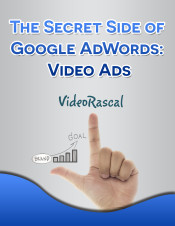
Grammy award winning artist, agent for some of sports biggest stars, fashion mogul. Jay Z is a lot of things, and you can add brilliant marketer to the list. Over the years Jay Z has made millions through various ventures and done so by employing shrewd marketing tactics. Even today, he still leverages guerrilla marketing throughout his businesses.
Here are 3 marketing tactics you should steal from Jay Z.
Pre-Sell Your Product
For his recently released Magna Carta Holy Grail album Jay Z pre-sold 1 million copies to Samsung at $5 each, well before it was released to the public. He sold a product that did not yet exist, and you can do the same.
For bootstrapped startups the first few months can make or break the venture and initial influxes of cash are tremendously valuable. Before spending time and money to build your product you should first validate the idea. The only true way to validate an idea is to get paid for the product/service. You can’t just ask people if they would buy your product, this isn’t a true validation, you need to ask them to pay you for it. A lot of people will tell you they like your idea or that they’ll buy it when it’s ready but most of them are lying. The cliche “put your money where you mouth is” rings true in this case. If you aren’t able to pre-sell your product, it may not be worth pursuing further.
Surprise and Secrecy Can Be Powerful
Remember when Jay Z “retired.” Well, it didn’t last very long. Since his “retirement” he’s released a number of albums, gone on tour and done a lot of other things he said he would never do again. Many have speculated that the retirement was fabricated to sell more albums and they’re probably right. I mean, come on, who really thought Jay Z was going to retire at the age of 34 while at the height of his popularity? Regardless if it was fake or real, it was a shrewd business move as the first album post retirement went on to sell more than any of this previous albums.
So what’s the takeaway? We’re not suggesting you stage a fake retirement. Instead, think about how you can create hysteria and an air exclusivity around your product. Maybe you’re getting ready to launch your product and you’ve built up an email list. Build anticipation for the product launch by emailing product screenshots to your email list or touting the exclusivity of the launch. You can even offer an exclusive discount for users that sign up within the first few days of going live.
Don’t Be Afraid to Give Away Your Product

When Jay Z pre-sold 1 million of his albums to Samsung, they in turn gave it away for free to Galaxy S4 smartphone owners. In exchange for the album, users were asked to provide information such as their email address and social media account profiles. As part of the deal Jay Z received access to this information. As a result, he now had the email addresses and social data of a million die hard fans that he could build further relationships with.
If used correctly social currency can be more valuable than actual currency. There is no doubt that Jay Z has put this to good use. The giveaway resulted in a ton of free press (both print and TV) and thousands of tweets about the new album.
But don’t just give your product away to anyone. When giving your product away it’s important to target inlfuencers and die hard users. These are the people that will champion your product throughout social media and help drive residual business and traffic to your site.
Conclusion
You don’t always have to reinvent the wheel. Look to others that have had success and emulate some of their tactics. Jay Z is just one example but there are countless other celebrities like Michael Jordan or the Grateful Dead that you can look to for ,marketing inspiration.
What celebrities have inspired your marketing? Let us know in the comments.




